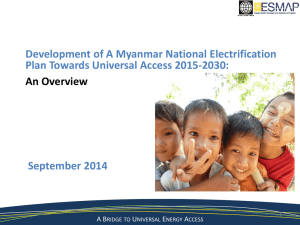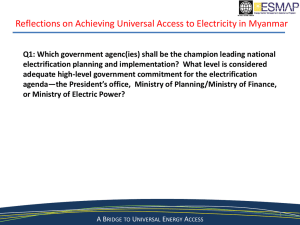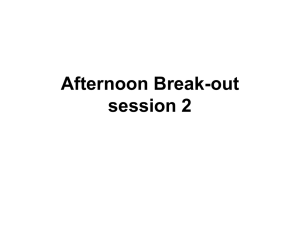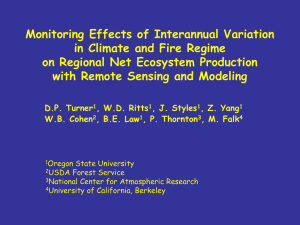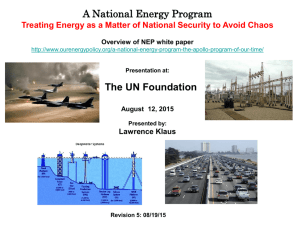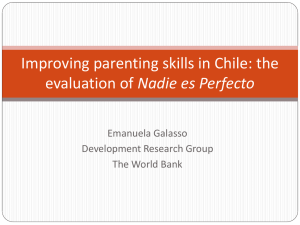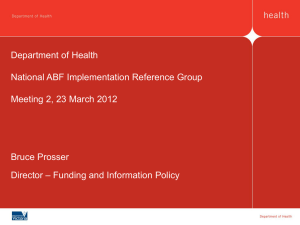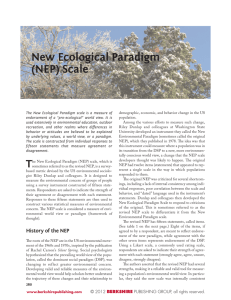1_NEP_workshop_Overview_presentation
advertisement
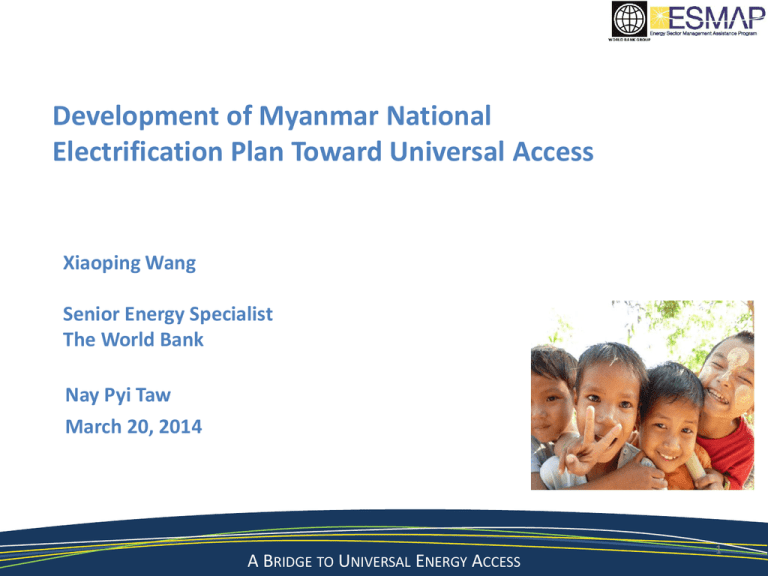
Development of Myanmar National Electrification Plan Toward Universal Access Xiaoping Wang Senior Energy Specialist The World Bank Nay Pyi Taw March 20, 2014 A BRIDGE TO UNIVERSAL ENERGY ACCESS 1 Key Messages from the May 2013 Workshop Access to modern energy service has direct bearing on poverty reduction and rural development. Globally, 70% of the poor and 85% of those without access to electricity live in rural areas Universal access to electricity by 2030 is achievable and affordable – as proven in other countries, the goal can be achieved with sustained government’s commitment, targeted sector policies, and significant financial support from donors The National Electrification Plan (NEP) should chart out a path towards universal access designed specifically for Myanmar, embrace both grid and off-grid solutions, and include appropriate policy and technical innovation to lower cost, improve reliability, and provide timely service to all households The World Bank Group will support NEP Development. Both financial support for investments, and technical assistance for institutional development will be available to Myanmar for the implementation of NEP A BRIDGE TO UNIVERSAL ENERGY ACCESS 2 Key Messages from the November 2013 Workshop Comprehensive sector planning to address both long term and short term challenges and align individual projects against Broad stakeholder engagements in process and nationwide geographic coverage of NEP Holistic approach to tackle supply shortage, high system losses, and expansion of energy services Consider all financing options to bridge funding gaps, including donor grants, concessional loans, private sector investment, and cross-subsidies, given tremendous investment needs. Is fundamental to define clear roles and responsibilities of key institutions at the national and regional/state levels, including planning, implementation, monitoring, and evaluation functions A BRIDGE TO UNIVERSAL ENERGY ACCESS 3 Myanmar National Electrification Plan (NEP) 2014-2030 • NEP is envisaged to be a comprehensive action plan for developing, financing, and implementing electricity access scale-up program nationwide, with the target of achieving universal access by 2030. • NEP aims to align support from different stakeholders with the implementation program for achieving national access targets and syndicates financing on a timely, ongoing and programmatic basis. Key Elements: 1. Geospatial Least Cost Electrification Rollout plan (grid and off-grid) 2. Road Map and Investment Prospectus A BRIDGE TO UNIVERSAL ENERGY ACCESS 4 Geospatial Least Cost Electrification Rollout Plan A high level geospatial rollout plan comprising: • • Systematic grid network rollout connection plan Complementary spatial plans for mini-grids and individual systems A BRIDGE TO UNIVERSAL ENERGY ACCESS 5 Scope of Work 1 Project electricity demand and connections at a disaggregated level 2 Compare different technologies and electricity supply options, and estimate total costs of electrification at each sub-location 3 Create GIS-based spatial least-cost electrification planning platform with georeferenced data layers that cover both grid extension and off-grid applications 4 Gather data to support the spatial planning platform 5 Examine the sensitivity of select outputs of the least cost plan to key policy variables A BRIDGE TO UNIVERSAL ENERGY ACCESS 6 Road Map and Investment Prospectus • Long-term and intermediate targets for 2014-2030 • Investment financing framework for the first 5 years • Action plan to address enabling policy and institutional framework • Capacity strengthening initiatives for key institutions and agencies 2030 2025 2014 2015 2020 2020 ? 100% ? ? ? 29% A BRIDGE TO UNIVERSAL ENERGY ACCESS 7 Scope of Work 1 Establish institutional framework for NEP implementation 2 Carry out funding gap analysis and investment needs for the first 5 years 3 Elaborate road map and investment financing prospectus A BRIDGE TO UNIVERSAL ENERGY ACCESS 8 Implementation Arrangements • MOEP and MLFRD jointly lead the NEP preparation with participation from other member agencies of NEMC and REPWSC and assistance from the World Bank. • MOEP and MLFRD co-manage consultants together with World Bank. This includes strategic guidance to data collection, review of key deliverables, organization of workshops and study tours. • Consultants work closely with the government teams throughout the NEP preparation process • Close coordination with ADB, JICA and other DPs on respective, related initiatives. A BRIDGE TO UNIVERSAL ENERGY ACCESS 9 Consultant Teams Two consulting firms were competitively selected to assist in NEP development: •Columbia University — Geospatial least cost electrification rollout plan, with experience in Indonesia, Kenya, Nigeria, Tanzania, etc. •Castalia – Roadmap and Investment Prospectus, with experience in Indonesia, Rwanda, Kenya, Vanuatu A BRIDGE TO UNIVERSAL ENERGY ACCESS 10 Key Milestones and Deliverables First Mission/ Workshop May 2013 Second Mission/ Workshop November 2013 Activities - Establish dialogue with government and other stakeholders - Share international experience -Discuss methodology and work plan -Continue dialogue with stakeholders Outputs -Agree on the need of an NEP and key work areas - Agree on methodology, milestones, and working arrangements Follow-on Work -Develop scope of work -Hire consultants -Dev methodology and work plan - Continue data collection - Interim results for Kayin and Chin States Third Mission/ Workshop March 2014 Fourth Mission/ Workshop August 2014 -Present and discuss interim results -Present draft NEP - Present investment opportunities -Agree on institutional framework options - Feedback on geospatial plan and IP -Agree on main revisions -Link potential financiers with investment opportunities - Complete draft NEP - Finalize NEP - Transfer data and training - Adopt NEP by government A BRIDGE TO UNIVERSAL ENERGY ACCESS 11
